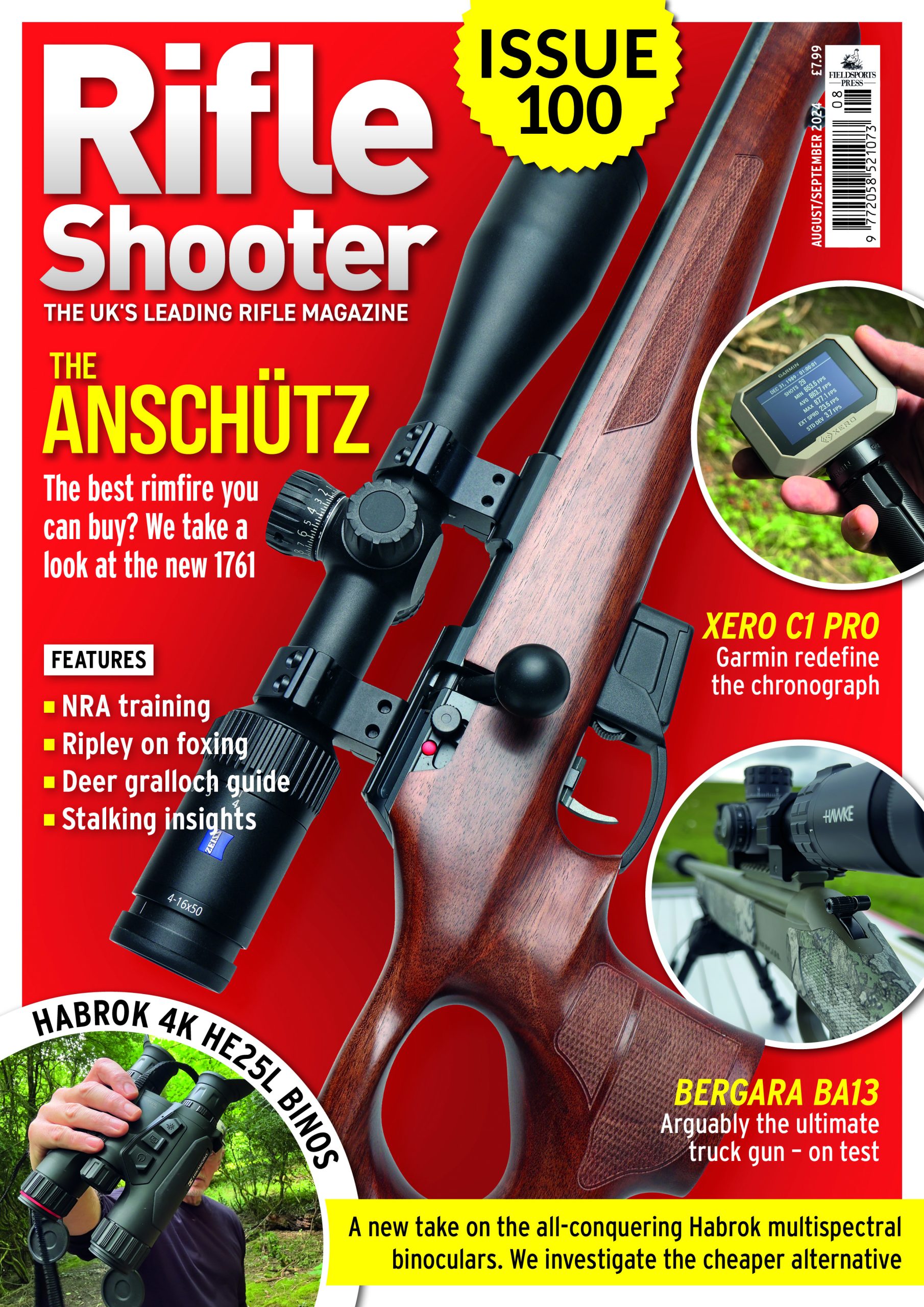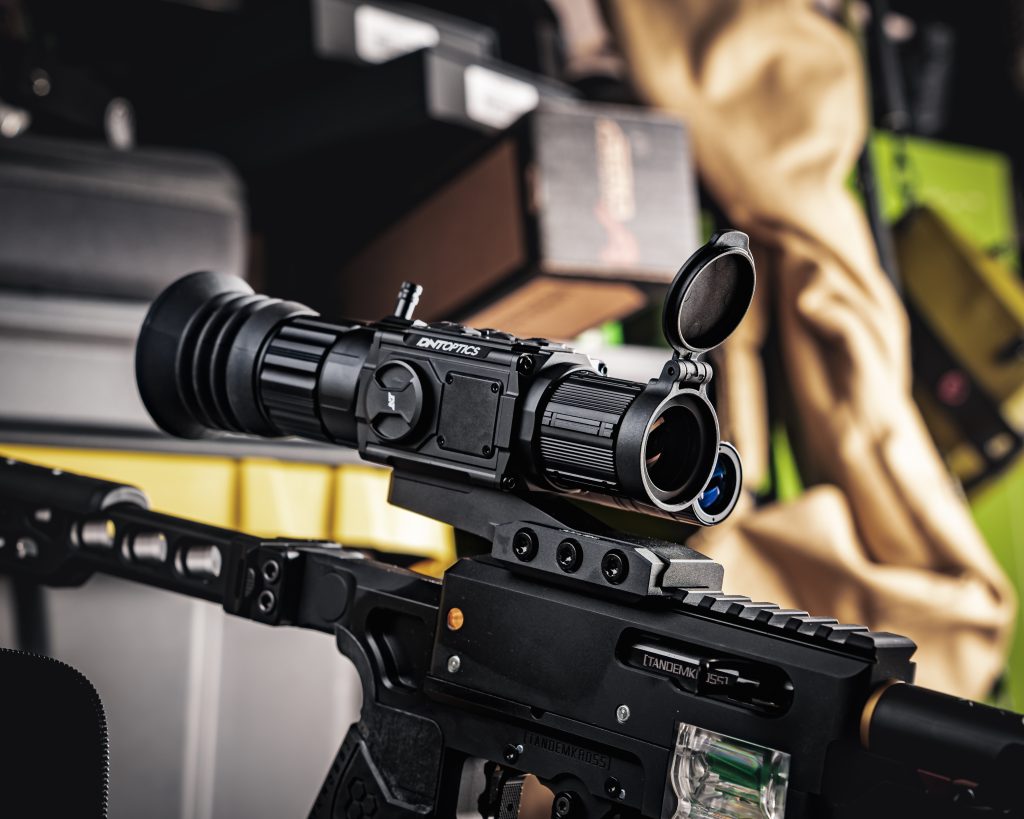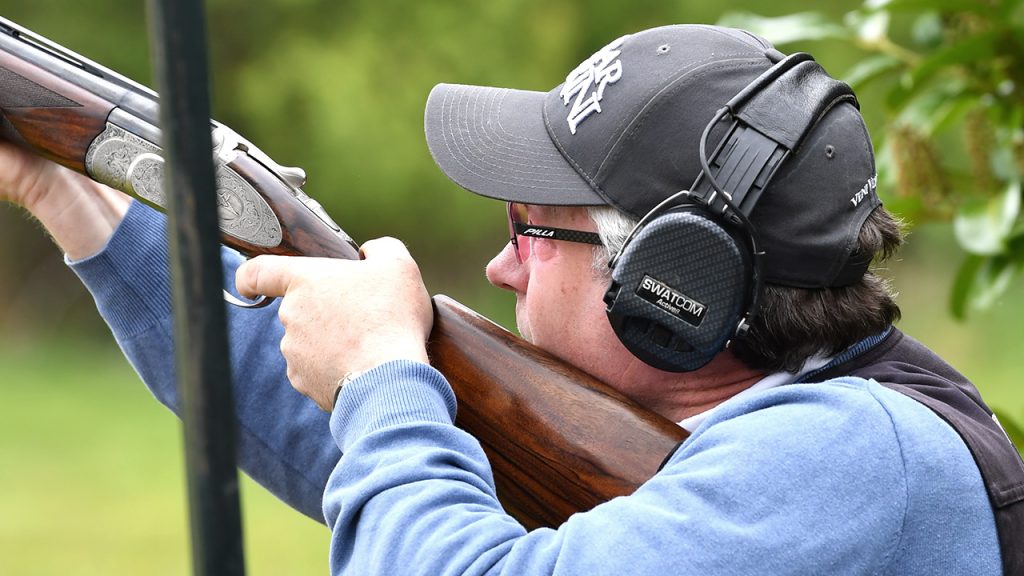Why choose Nocpix?
Mark Ripley puts the spotlight on the new range of thermal products from Nocpix-and explains why you should take a closer look before parting with your hard-earned cash.
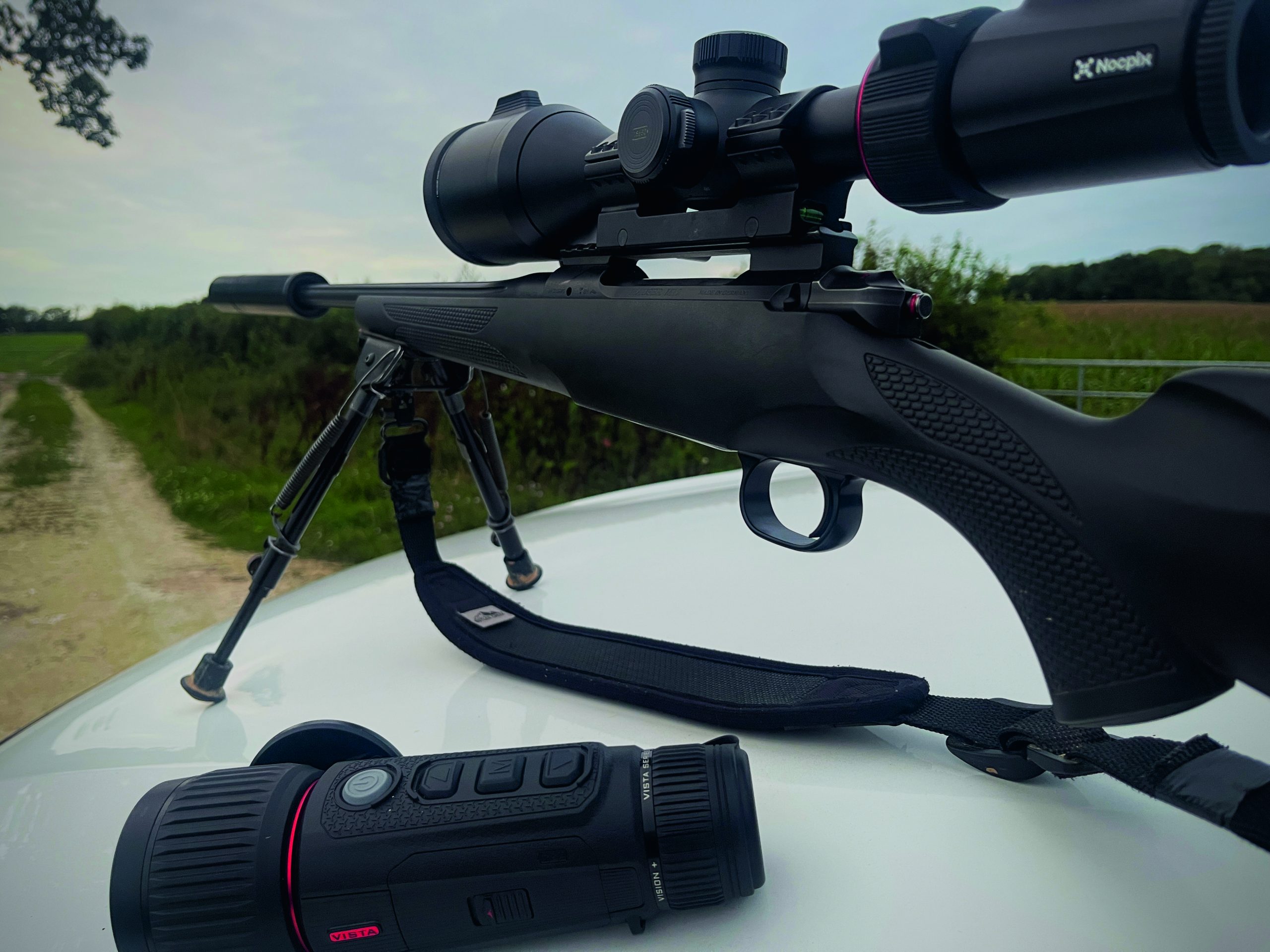 Image quality is excellent across
the Nocpix thermal range
Image quality is excellent across
the Nocpix thermal range
As someone who regularly reviews the latest products, I’m in the fortunate position of being able to try pretty much everything before I buy. One particular area where this is particularly useful is night vision, and even more so, thermal products. The market is filled with an ever changing range of products from a growing number of manufacturers. Most people with even a passing interest in such things will be familiar with brands such as Pulsar, Hikmicro and InfiRay, but what about Nocpix?
Nocpix is in fact the new name for InfiRay and is perhaps a little overshadowed by other manufacturers’ more aggressive marketing. Of all the thermal products I’ve used, I’ll say from the start that Nocpix by and large comes out top, due to its superior image quality compared with similar, comparably priced products. I think it’s fair to say that Hikmicro is certainly nipping at its heels on the thermal market, yet Nocpix just seems to have the edge.
But image quality isn’t everything, and when comparing products one needs to also look at build quality, ease of use and what is right for you. Everyone’s preferences are different, as are the needs of each individual, so don’t take my word for it. You need to look for yourself – ideally out in the field.
So with around £30k worth of Nocpix products arriving at my door I began the rather daunting task of getting my head around each one and testing them in the field for the first time. Nocpix has an extensive range of products, so I picked a representative selection to look at.
Bolt L35R
Starting things off with an entry-level thermal riflescope, we have the new, and already popular, Bolt L35R. The price of just under £1,500 is exceptional for a thermal scope, especially considering its features. The quality of the sensor is an important part of any thermal scope, which is greatly reflected in the price. The Bolt is most suitable for air and rimfire rifles at ranges out to around 200yd on small game.
However, there’s nothing stopping you using it on a centrefire. Its recoil is rated up to .375 H&H, although realistically for foxing you would be better off paying a bit more and moving up the product range. Considering its price, the Bolt is packed with excellent features including a 1,200m laser rangefinder, integrated ballistics calculator and inbuilt recording with a recoil activated option. It also has the ability to review footage through the scope – an excellent feature if you need to follow up a wounded animal in the field.
The ballistics calculator is an excellent feature that allows you to enter bullet and firearm data to give an accurate firing solution at the touch of the rangefinder. The range is then displayed in the scope, along with either a corrected holdover point highlighted or a corrected crosshairs – you simply point and shoot. Incidentally one of the latest options with the Nocpix range is the N Link feature, which allows any LRF Nocpix product to be used in conjunction with a non-LRF model.
On an air rifle or .22 rimfire, with their curved trajectory, this is a real game-changing feature that makes guessing holdover a thing of the past. The Bolt’s 384×288 sensor is <20mK NETD with a frame rate of 50Hz, keeping images crisp and smooth. It also features an HD AMOLED display and 35mm f/1.0 germanium lens, designed to offer the best field of view combined with image quality. Overall build quality is excellent, with a built in lens cap, simple control setup, front objective focus, threaded rubber eye cup and a 30mm tube to allow the scope to be easily mounted using standard rings.
If your rifle is fitted with a Picatinny rail this also makes it easy to fit quick-release mounts such as the Sportsmatch Hop92, enabling you to swap scopes in seconds with no loss of zero. Another impressive feature is the scope’s variable 3.5-14x magnification range, which zooms smoothly by rotating the top turret. The unit has an internal rechargeable battery and can also be powered by standard 18650 batteries to extend the already impressive battery life. The Bolt comes supplied with two 18650 batteries and a charger, and is IP67 protection rated against dust and water immersion.
Ace L35
Moving up a notch we get into the Ace series of thermal scopes, which is where things start to get serious. The Ace L35 is a level up from the Bolt in terms of performance with its 12 micron, 384×288, <18mK NETD sensor; 60Hz frame rate; and 2560×2560 round display. It also has a slightly higher magnification of 4-16x, a 1,800m detection range and a 35mm objective. Like the Bolt it has an in-built battery and also runs on replaceable, rechargeable 18650 batteries.
In fact the Ace has all the same features as the Bolt except for the laser rangefinder and ballistics capabilities. That is why it costs only around £360 more, even with its better sensor. This in my opinion would be a better option on a centrefire as an entry-level foxing scope, where a flat shooting rifle means ballistic calculations are less important out to 300yd. Another excellent feature of the Ace range is that alongside the already good digital magnification you have a clever optical 1-3x magnification. This allows you to zoom in that extra bit without losing picture quality, as you do at the higher end of a digital magnification range.
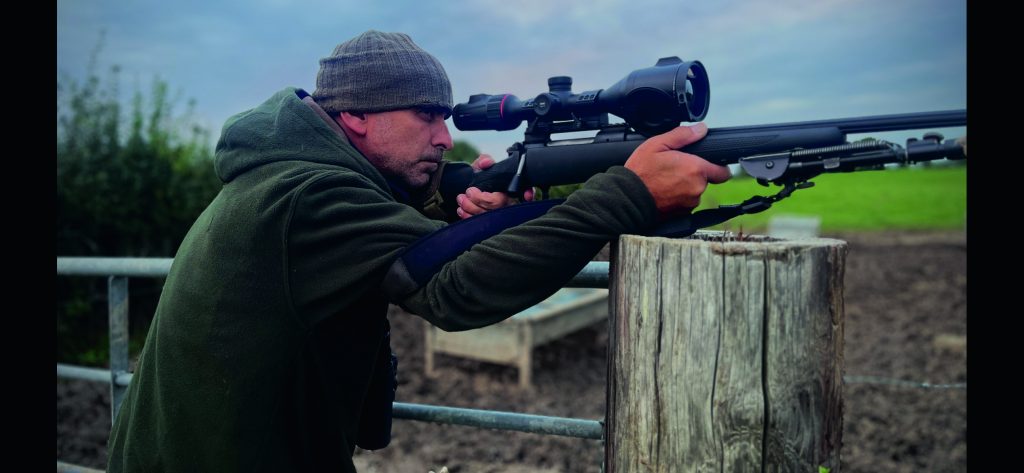
Ace H50R
Now for me, and the vast majority of foxers, this is the sweet spot in the range. The H50R is available both with and without the LRF and in-built ballistics calculator, but if you are able to afford this scope you would be seriously missing out by not paying the extra £400 or so for this feature, as once it’s set up it’s an absolute game changer. I would say that for its combination of features, price and performance, the H50R (the ‘R’ being the range finding version) offers the best option as a foxing scope, retailing at around £3,579.
With a 640×512, <15mK NETD sensor, this unit gives an excellent picture even on higher magnification. These models also feature shutterless technology, so no more annoying refreshing and picture freezing at the crucial moment. With a 3-24x digital magnification as well as its 1-3x optical mag, the H50R has an impressive 2,600m detection range and a 2560×2560 round display. Again these scopes have the internal battery and external 18650 batteries as well as all the previously mentioned features, except for the H50. As you may have guessed, the ‘50’ in the names relate to the objective lens diameter, which moves me on to the beast of the series, the S60R.
Ace S60R
I’ve had this scope for around five months and have used it on several rifles, but mainly on my long-range .260 Rem – and it really is some bit of kit. Having set up the ballistics in the scope I took it out for some long-range play during the day and soon found a few rabbits to test out how well it worked and thin out a few around the farm. Picking one at around 300yd I pinged the range, the scope displayed the corrected holdover and I took the shot.
This proved a doddle for both the scope and rifle. With no other rabbits out, apart from two at 700yd, I thought I’d give it a go as I had a good safe backstop. The first shot landed just to the right of the chosen rabbit with the bullet splash clearly visible in the scope. Holding off to the left the corrected amount, a second shot dropped the rabbit cleanly. Using this scope throughout the lambing season, I nailed a good number of foxes out to around 300yd as well as one cracking one at 450yd.
The S60R has all the same features as the H50R but with a 1280×1024 sensor and 2-24x magnification, which makes it excellent at range, partly due to the crisp sharp image of the bigger 60mm lens. This does, however, mean that the scope is heavier and bulkier than the H50R, which is the slight trade-off. The bigger trade-off is the additional cost at £5,399.99, which is quite a jump from its little brother.

Rico 2 – S75R and L42R
Now we get into the Rico range. If you’re one of those shooters who takes their sport very seriously and want the best regardless of price, then the Rico range, and especially the S75R model, certainly has you covered. This really is a professional-grade bit of kit. Even the hard case it comes in has that no-nonsense, military vibe. On opening it you are faced with a seriously impressive scope.
With its highly engineered mount and massive 75mm lens, you can’t help but be taken aback by the look of this unit. That said, at £7,699 it’s not for your everyday shooter. This unit is for the professional or someone who demands the best. With a 12 micron, 1280×1024, <15mK HD sensor, 3-30x magnification and 3,896m detection range, this scope is designed to give razor-sharp images in the worst conditions.
Add to that its 1,200m laser rangefinder and in-built ballistics, it’s capable of identifying and eliminating targets at extended ranges. Combined with a 2560×2560 OLED display, the image quality is simply unsurpassed. The trade-off for all this performance – other than the price – is that it is quite a lump. Weighing 1,350g, it is a little heavier than other scopes and the larger lens may make it tricky to mount on some rifles – and even fit it in a standard rifle slip when on the rifle. However this scope is clearly designed to be transported off the rifle in its dedicated case, and with its included and extremely sturdy looking mount, to reliably hold zero when mounting on a Picatinny rail.
Another model from the Rico 2 series is the L42R. It is a smaller version of the S75R, with a 42mm lens and 384×288, <20mK NETD sensor. It also features a 1,200m laser rangefinder, ballistics calculator and 2560×2560 AMOLED screen. Even with its lower-grade sensor and lesser 4-16x magnification, detection range is still impressive at 2,197m, making it a more general-purpose foxing or night-hunting scope, retailing at a more modest £2,599. Both these units incorporate a nice smooth zoom lever neatly placed just forward of the eyepiece, making it easy to zoom in without taking your eye away from the scope.

Lumi series
Moving on to thermal spotters, you won’t be surprised to know that Nocpix also has an impressive range of units to choose from, with a model to suit every budget. The Lumi spotters are essentially the same unit throughout the range, just with better performance and rangefinding options as you go up. The Lumi P13, which weighs a mere 310g, is a compact, pocket-sized monocular that comes with a neat black pouch with molle loops on the rear, and a magnetic lens cap. The design of the Lumi is really well thought out with nice little touches, such as the lens cap holding itself to either side of the unit so that it doesn’t dangle around annoyingly while you scan.
The P13 retails at £539, which is extremely cheap for a thermal spotter, even a basic one. It runs on a single 18650 battery, which can be quickly swapped in the field, and it also comes with a charger, wrist strap and neck strap. The P13 model has a 12 micron, 256×192, <20mK NETD sensor; 2-8x magnification; a stated 6hr run time on a single battery; and a detection range of 670m on a man-sized object. You can also record video and stills to an the-built memory. The P13 takes its name from the 13mm lens and, despite being so small, is very impressive for its price. I was pleasantly surprised at what you can now buy for that sort of money.
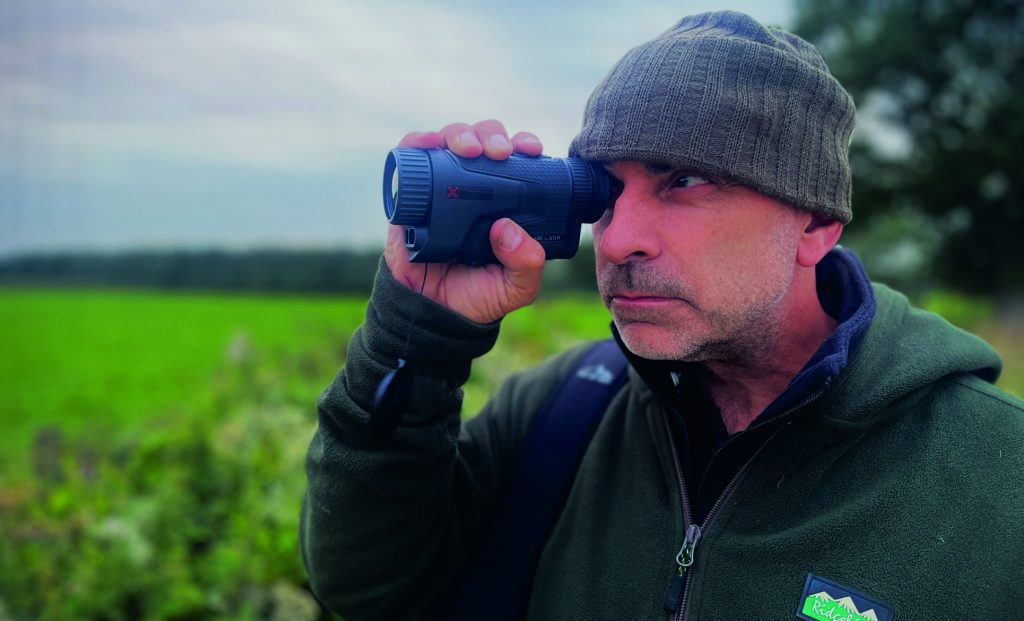
Moving up the range are the L19 and L35 models, retailing at £899 and £1,269 respectively. They have a 12 micron, 384×288, <18mK NETD sensor, weigh 335g including battery, and have lens diameters of 19mm and 35mm. Stepping up again is the H35 model, with a larger 640×512 sensor, which retails for £1,599. There are also two rangefinding models in the Lumi range, the first in a LRF version of the L35, the L35R, and the other a H35R priced at a tempting £1,399 and £1,599 respectively. Both look similar to the non-LRF versions, but weigh fractionally more and have a neat rangefinder unit housed below the objective lens.
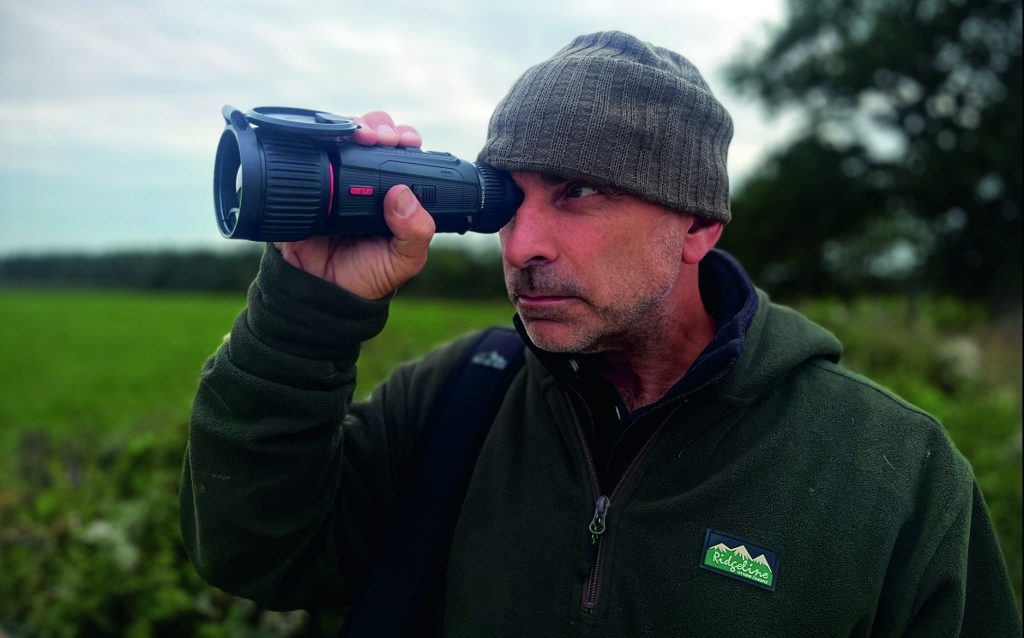
Vista series
The other monocular series of spotters is the . These models have more traditional round bodies and are bigger, bulkier and heavier than the little Lumi units. They give a much better viewing experience with their larger lenses and 12 micron, 640×512, <15mK NETD sensors (the S50R model has a larger 1280×1024 sensor). There are several models available, from the H35 costing £1,899, H35R (LRF) £2,199, H50 £2,399, H50R £2,599 and finally the S50R, which comes in at £3,999.
The Vista units come with a neat case that can also be used like a harness system, as well as a neck strap, charging lead and two battery packs rather than the 18650 batteries of the Lumi range. Like the Lumi range, the Vistas can be used one-handed for quick scanning, but focusing is definitely a two-handed job. Although the performance is clearly better with the Vista range, the ergonomics, small size and lightweight of the Lumi makes it a tough call as to which I would rather use. It will depend on the type of shooting you do and the kind of ground.
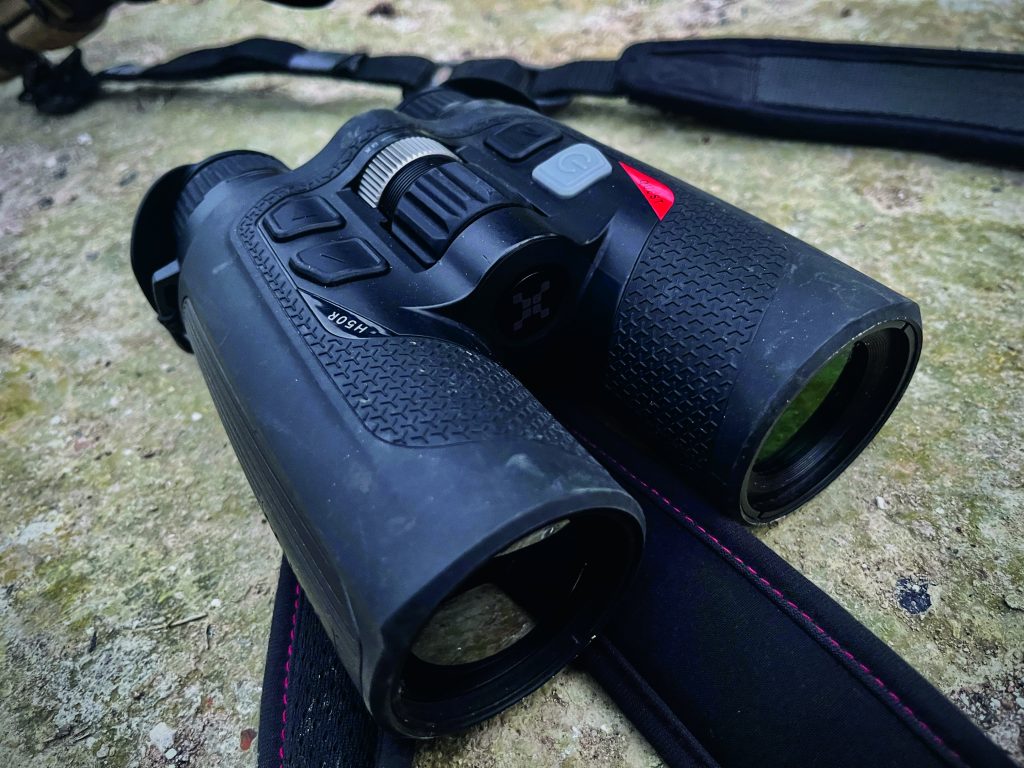
Quest thermal binos
Finally we come to my personal choice of thermal spotters and the model I’m currently using for my everyday (or should I say night) foxing excursions – the Quest thermal binoculars. I’ve been using a binocular style thermal spotter for a while, and although larger and heavier, the reduced strain on my eyes and comfort of use make this style of thermal a winner in my book. The Quest binos come in three models, the L35R, H35R and H50R.
As you have probably gathered, they are all rangefinding models and have much the same features, although the L35R has a higher base magnification of 5x while the H35R has 3x and the H50R has 4x. A 5x base mag can be quite high if scanning at close range, but is ideal for open ground. The other obvious difference between the models is the sensors. All are 12 micron yet the L35R is fitted with a 384×288 sensor while the other two use a 640×512, which gives the two 35mm lens models a 1,800m detection range and the 50mm lens version an impressive 2,600m range.
The Quest binos are ergonomically friendly, with four buttons, a power button, menu button, video record button and a LRF button. To focus the unit and operate the zoom magnification, you use the two roller wheels on the bridge of the binos – exactly where you would find the focus on a normal pair of optical binoculars. The Quests run on a single replaceable 18650 battery with an additional internal battery, which has so far proved plenty for me on a normal night’s foxing. The unit comes with two 18650 batteries for extended use, along with a harness-style case, neck strap and charger.
I have the H50R binos and would say they are as good as or better than any other thermal spotter I’ve used. Perfect for every use, it’s a simple-to-use unit that just does what you want it to do. Prices are £1,699 for the L35R, £2,299 for the H35R and £2,699 for the H50R.
Related Articles
Get the latest news delivered direct to your door
Subscribe to Rifle Shooter
Elevate your shooting experience with a subscription to Rifle Shooter magazine, the UK’s premier publication for dedicated rifle enthusiasts.
Whether you’re a seasoned shot or new to the sport, Rifle Shooter delivers expert insights, in-depth gear reviews and invaluable techniques to enhance your skills. Each bi-monthly issue brings you the latest in deer stalking, foxing, long-range shooting, and international hunting adventures, all crafted by leading experts from Britain and around the world.
By subscribing, you’ll not only save on the retail price but also gain exclusive access to £2 million Public Liability Insurance, covering recreational and professional use of shotguns, rifles, and airguns.
Don’t miss out on the opportunity to join a community of passionate shooters and stay at the forefront of rifle technology and technique.
